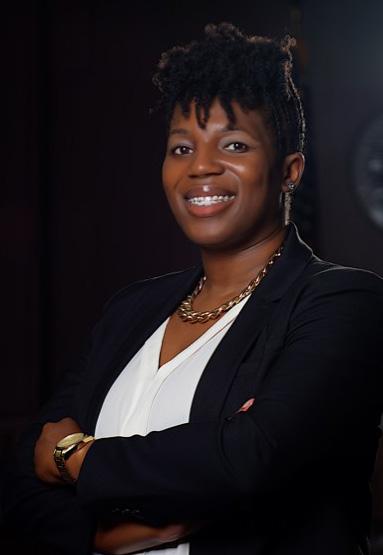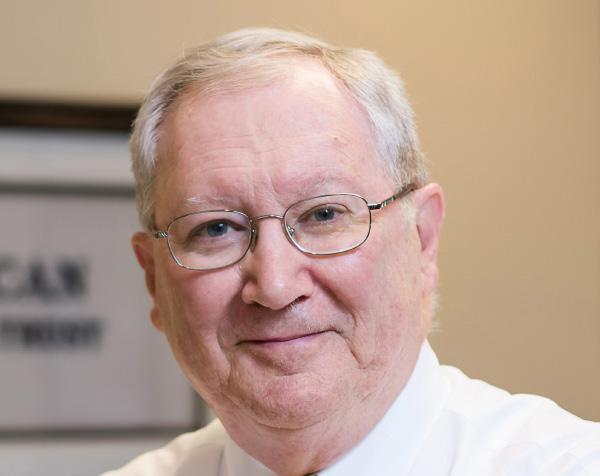
10 minute read
DIRECT EXAMINATION
DIRECT EXAMINATION: JUDGE BRYAN COLLINS | RESIDENT SUPERIOR COURT JUDGE

Advertisement
DIRECT EXAMINATION IS THE FIRST opportunity for the jury to meet a witness. An effective lawyer will use the opportunity to personalize the witness, making the witness appear both likeable and credible. At the end of the day, the direct examination is a party’s best chance to tell his or her story.
1.When you were in elementary school, what did you want to be when you grew up?
I’m sure at one time I wanted to be an astronaut. I was eight years old when Neil Armstrong walked on the moon and thought the whole space program was amazing.
2.What was the most important lesson your parents taught you?
My parents were big on leading by example. By watching them I learned that no person is any better or worse than any other person.
3.Who was your favorite teacher and why?
William Clark, who was my high school government teacher. He encouraged us to use our brains and engage in critical thinking. He also let me be the judge in our mock trial, which included wearing a black robe. I was hooked from that day on and set about becoming a lawyer and a judge.
4.Did you love or hate law school?
I loved law school. I developed some very close friendships that have lasted to this day.
5. What was your most embarrassing courtroom experience?
I’m sure that in my first few years of practice I did any number of things that should have embarrassed me, but I was too obtuse to realize it.
6.What was your best courtroom experience?
My best courtroom experience was during my time as the attorney for the clients in Drug Treatment Court (now known as Recovery Court) when a client would graduate. The folks who came into that program at that time were in very bad shape and had to overcome enormous obstacles to succeed. There is one graduate in particular who still gives me a big hug and thanks me every time she sees me on the street.
I got a bad speeding ticket when I was 16 years old. The lawyer I hired was very professional and made me feel so much better. When we went to court, I was very impressed with how much respect he was shown by everyone in the system and how he treated everyone in the courtroom. I decided I wanted to be like him. His name was Bill Mitchell in North Wilkesboro.
8. What has been the most surprising or unexpected development in your career?
All of us were caught off guard when the General Assembly decided that Wake County would have a Public Defender. In a matter of just a few months, I sought and received the appointment, shut down a thriving law practice and started the Public Defender’s Office from scratch. I’ve never worked so hard in my life and I’m surprised it all came together so well.
9. What is your favorite book?
“To Kill a Mockingbird,” by Harper Lee.
10.What is your most marked characteristic?
I hope it’s my quick wit and teddy bear demeanor. I expect some might differ.
11.What is your hidden talent?
I spent two summers as a professional actor, dancer and stunt man.
12.Who are your real life heroes?
My mom and dad.
13.When and where were you happiest?
I’ve led a very happy life. I’ve had my share of setbacks and challenges but that’s all part of life. Right here and right now is the happiest time of my life.


DIVERSIFYING LAW FIRM PARTNERSHIPS AND LEADERSHIP POSITIONS
BY NIYA FONVILLE | CAMPBELL LAW SCHOOL | COMMITTEE FOR DIVERSITY & INCLUSION CHAIR

IN JULY 2020, the American Bar Association reported that women of color only held a handful of leadership roles in law firms across the United States, and that the attrition rate was high. Specifically, the ABA’s report found that 14% of associates are women of color, but women of color only account for 5% of non-equity partners, and just 3 percent of equity partners. This means that only 21% of women of color who start on the law firm path make it to the level of equity partner. White women, at 54%, make it to equity partner at more than double the rate of women of color. Perhaps the most troubling realization of the ABA’s statistics is that, notwithstanding race, the prevalence of women narrows as leadership within law firms rises.
Why are women of color passed over for partnership within law firms? According to the participants included in the ABA’s report, both gender and racial challenges come into play. Women of color point to “a lack of mentor ship, being talked over in meetings, not getting credit for their ideas, the scarcity of inclusion in business opportunities, and the absence of a support system to help them navigate rough patches, as well as deep-rooted stereotypes about women and life balance.” When faced with the heaviness of these challenges, women of color must decide whether to stay at the law firm or move on to law firms, organizations or other entities that respect their work and appreciate their voice. In some cases, women of color were acutely aware of these challenges before stepping foot in a law firm. As Rhonda Young, the founding attorney of Young Law Office, PLLC in Raleigh, explains, “Seeing minimal opportunities for the advancement of minority women within law firms, I elected to start my own firm immediately upon graduation from law school. I wanted to and still do provide opportunities for minorities within the legal profession.”
Many law firms indicate that they are committed to diversity. In my faith, there is a scripture that states “faith without works is dead.” In other words, it is insufficient to announce a commitment to diversity and not take any action to make it happen. In that vein, I implore Wake County law firms, both big and small, to actively seek out and recruit persons of color, women, LGBTQIA+ and other minority groups not only to work at the firm, but to be considered for partnership and leadership positions. Some steps may include, without limitation:
• Recruiting at minority job fairs like The Southern
Regional Black Law Students Association Conference and Career Fair, The Hispanic National Bar Association
Career Fair, and The Lavender Law Conference and
Career Fair; • Partnering with diverse associations like The Capital
City Lawyers; Association, Wake Women Attorneys, and the National Asian Pacific Bar Association, to advertise position openings; • Creating and maintaining affinity groups for people of color, women, those with different abilities and other minority groups with a focus on mentoring and networking opportunities; and • Offering flexible and/or nontraditional work schedules, which may include remote working. WBF
WITH A LEGAL BACKGROUND AND REAL ESTATE EXPERTISE, I CAN ASSIST YOU AND YOUR BUSINESS SURROUNDING ANY REAL ESTATE NEEDS AND GOALS. CALL ME TODAY TO DISCUSS DETAILS. JAMES BAILEY, J.D., BROKER 919.576.2514
LAW AND PARTNERSHIP - THEY GO TOGETHER LIKE LOVE AND MARRIAGE

BY E.D. GASKINS, JR. | EVERETT GASKINS HANCOCK, PLLC | ASSISTED BY KATIE H. KING
“TO PARTNER” can be defined as joining together to achieve a common purpose. Perhaps the most common and well-understood partnership is the one achieved by successful “marriage partners.” The definition of “partnership” which I prefer is “a relationship in that individuals agree to cooperate to advance each other’s and their mutual interests.”
I have been in a successful marriage partnership for more than 50 years. I have been in three successful law partnerships, one for more than 10 years and the two others for more than 20 years each. From time to time all three law partnerships considered changing to a professional corporation (“PC”) or professional limited liability company (“PLLC”) form of governance. Although we could have gained some slight financial advantages and ease of management by doing so, I was opposed because of what we would have lost.
Corporations and LLC’s are entities conceived primarily to benefit the conduct of business. They both can be centrally managed by a small number of individuals as well. They permit the investment of capital by individuals not involved in the running of the business and who have no legal obligation to each other or to the success of the endeavor. Corporate shareholders and LLC members can invest with limited risk of liability or loss. Corporate shareholders and LLC members have no fiduciary duties to each other or to the entity in which they own an interest.
By contrast, partners have fiduciary duties to their partners and to the partnership entity. A fiduciary owes a duty of trust and an obligation to act in a manner so as to benefit the one or ones to whom the duty is owed, even to the point of disadvantage to oneself. That is the relationship I have enjoyed in my marriage and the way I have endeavored to conduct myself towards my marriage partner. Similarly, that is the relationship I have sought with my law partners and the way I have endeavored to conduct myself towards them and expected them to conduct themselves towards me. For the most part, my partners and I have lived up to our mutual fiduciary responsibilities.
As licensed attorneys, my partners and I believe (and most lawyers profess to believe) that we are officers of the court; critical elements in implementing the rule of law; committed to providing equal access to justice; dedicated to serving the needs of our clients; with a responsibility to use our training to further the needs of the community. Generating income for ourselves is necessary, but secondary to and a by-product of our service as attorneys to our clients, our profession and our community.
And so I ask you, given that belief, which form of organization best suits the practice of law? The relationship I want with those with whom I practice is best defined by the partnership model with its emphasis on duty to each other and to the success of the partnership. The focus on service as opposed to financial gain is best exemplified by the partnership model as well.
My partners and I are now a limited liability partnership, which gives us some protection from third-party claims without altering the nature of our relationship with each other. I also acknowledge that the partnership form of organization is not well suited for large firms with tens, hundreds and even thousands of lawyers. In addition, some foreign countries (Great Britain for example) and at least one state (Arizona) now permit non-lawyers to be equity owners of law-practicing entities that are organized as corporations or LLC’s. Such lay owners are not officers of the court; do not profess to uphold the rule of law; are not dedicated to providing access to justice to all; are not obligated to serve clients’ needs; nor to serve the community. Thus the partnership form of governance would be neither practical nor consistent with the absence of a sworn, legal duty to serve each other and the rule of law.
But that illustrates the point, doesn’t it? For a small-to-medium-sized firm of dedicated lawyers, partnership is the model that works. It is the best form of governance and makes a statement about both the relationship of the lawyers in the firm to each other and the purpose of the organization. That is why I always have, and hopefully always will, practice law in a partnership. WBF







